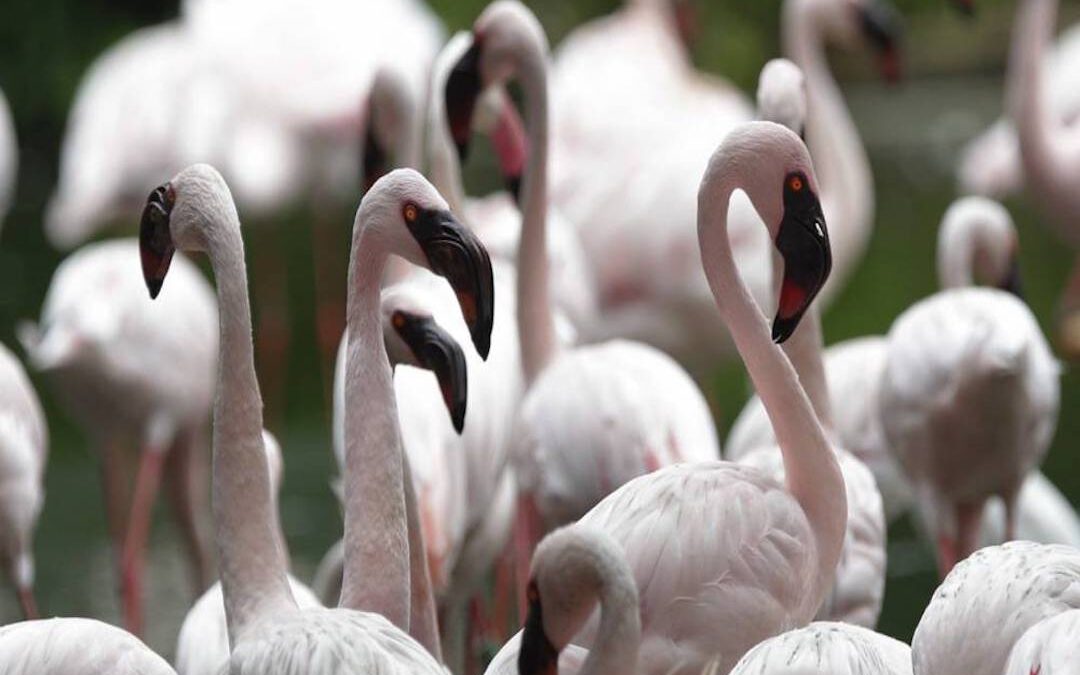Conservation scientists are employing the power of artificial intelligence to count flamingo populations in Botswana.
Experts from UNSW’s Centre for Ecosystem Science have discovered a method of accurately counting hundreds of thousands of flamingos in Botswana using AI. The study was recently published in the journal Global Ecology and Conservation, completed using aerial photos of the northern basin of Sua Pan and the easter pan in the Makgadikgadi Pans. Taken in 2019, these images enabled researchers to determine there were 532,197 flamingos in total living in the pans.
As one of the largest salt pans in the world, collecting accurate population numbers has been an elusive task since the 1970s. The recent UNSW count is the first estimate of flamingos in the area for a decade.

Harnessing the power of technology
There are currently two species of flamingo inhabiting Africa, the lesser flamingo Phoeniconaias minor and the greater flamingo Phoenicopterus roseus. These pink birds live on large salt lakes, feeding on microscopic algae and invertebrates. They achieve this by straining the water and catching their food with special comb-like structures lining their beaks.
In order to determine the number of flamingos in the area, the team input 3715 images into a machine learning system, taken by a Cessna aeroplane that flew at a height of 500-600 metres above the pans.
To gather an accurate estimate, the scientists needed to monitor the overlapping of photos on the margins and ‘teach’ the system to recognise pink dots are flamingos. This was a challenging task largely due to turbulence which impacted the stability of the plane and thus the stability of the images.
However, when compared to a researcher who manually counted each individual dot across several of the photos, it was found that machine learning was equally effective at numbering the birds.
Sophie Yang, a researcher from the Centre for Ecosystem Science, led the study and developed the new analysis technique.
“It was quite a challenge to organise so many photographs across such a largely featureless landscape,” she explained.
“Given some restraints during data collection, we had to partition the dataset to account for the variation in overlap between photographs.”

Sua Pan in Botswana © Aterian plc
A species under threat
Citizen scientist Mike Holding was the man behind the project’s origins. With the help of others, he rigged up the plane and flew it systematically over the pans.
“Previous flamingo counts in Botswana have been done manually from photographs – a painstaking and lengthy process. The use of AI technology is ground-breaking for assessing flamingo and other bird species’ numbers,” he said.
Currently, the pans are one of only six major breeding sites for lesser flamingos, and Sua Pan is one of the most important breeding sites in Africa. This is because these birds are classified as Near Threatened on the IUCN Red List of Threatened Species. Flamingos require very specific breeding conditions, including the right amount of flooding to create an island of mud for raising chicks, removed from the threat of predators. However, current protections of the Makgadikgadi Pans are insufficient, leading to threats from adventure tourism developments, dam building and other human-related activities.
According to Professor Richard Kingsford, co-author of the study, “these fragile environments must be protected if we are to conserve these incredible birds, which are an important part of these rare ecosystems and a major tourist attraction.”
“We need to protect the flooding regime, by making sure water from the Nata River in the north and other rivers to the Makgadikgadi Pans, such as the Boteti River, are maintained.”
In order to track levels of flooding, the team used satellite technology. Researcher Dr Roxane Francis says “we were able to use available satellite imagery to investigate the frequency of the pans filling from rivers and local rainfall, giving us a good idea of their likely importance for breeding and feeding flamingos.”
If Sua Pan is to be protected as a sustainable feeding and breeding habitat, regular monitoring is vital. Researchers are hopeful that their AI method of counting birds can simplify future surveying and protect these beautiful animals.
Opening image: the lesser flamingo
To learn about Australia’s endangered species, click here.

